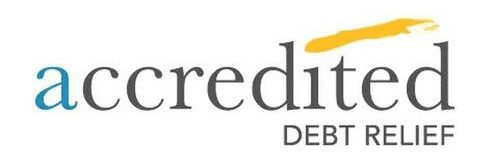Debt is a common financial tool used by individuals and businesses to finance various expenses. However, it is important to understand the weight of debt and its impact on finances. Debt weight refers to the amount of financial burden that is imposed on an individual or business due to their debt. Understanding the differences between Debt Settlement vs Debt Consolidation is crucial for making informed financial decisions and managing debt effectively.
In this blog post, we will discuss the formula for calculating debt weight, the factors that affect debt weight, and compare the strategies of debt settlement vs debt consolidation as potential approaches to address and alleviate debt weight. By comprehending debt weight and exploring these alternatives, individuals and businesses can make informed choices in their financial planning and adopt effective strategies for managing and reducing their debt burden.
Understanding Debt Weight

Debt weight is the amount of financial burden that is imposed on an individual or business due to their debt. It is calculated by dividing the total amount of debt by the total income or revenue. Debt weight can have a significant impact on personal and business finances. For individuals, high debt weight can result in reduced disposable income and limited financial flexibility. For businesses, high debt weight can affect their ability to invest in growth opportunities and make necessary purchases.
For example, a person with a high debt weight may struggle to make mortgage payments, pay for healthcare expenses, or save for retirement. Similarly, a business with a high debt weight may struggle to invest in research and development, hire new employees, or expand its operations.
The Formula for Calculating Debt Weight
The formula for calculating debt weight is:
Debt Weight = Total Debt / Total Income or Revenue
To calculate debt weight, you need to determine the total amount of debt and the total cost of equity and income or revenue. Total debt includes all outstanding debts such as loans, credit card balances, and mortgages. Total income or revenue includes interest expense and all sources of income such as salary, rental income, and business revenue.
For example, if a person has total debt of $50,000 and a total income of $100,000, the cost of debt and weight would be:
Debt Weight = $50,000 / $100,000 = 0.5 or 50%
This tax rate means that a tax rate of 50% of the person’s income is being used to pay off debt, which may limit their financial flexibility.
Factors Affecting Debt Weight
Several factors can affect the weight of debt, including interest rates, the length of the loan, the principal amount, and the type of debt.
Interest rates can have a significant impact pre tax cost and on debt weight. Higher interest rates mean that more money is being spent on interest payments, which increases the total cost of the debt and the weight of the debt.
The length of the loan also affects the cost of debt and weight. Longer loan terms mean that the minimum rate of more interest is being paid over time, which increases the total cost of the debt and the weight of the debt.
The principal amount also affects the equity cost of equity, and debt weight. Higher principal amounts mean that more money is being borrowed, which increases the total cost of the debt and the weight of the debt.
Different types of debt can also affect debt weight differently. For example, credit card debt typically has higher interest rates than student loans, which can result in higher debt weight for credit card debt.
Debt Weight and Financial Planning

Understanding debt weight is crucial for financial planning. It can help individuals and businesses make informed decisions about borrowing and managing debt. By calculating debt weight, individuals and businesses can determine how much of their income or revenue is being used to pay off debt and how much is available for other expenses or investments.
To use debt weight in financial planning, individuals and businesses should aim to keep their debt weight below a certain threshold. This threshold may vary depending on individual circumstances and debt after tax cost amount, but a general rule of thumb is to keep debt weight below 40-50%. This allows for some financial flexibility and the ability to make necessary purchases or investments.
Strategies for managing debt weight include paying off high-interest debt first, consolidating debt into a single loan with a lower interest rate, and increasing income or revenue through additional sources such as a side job or business venture.
Conclusion
In conclusion, understanding debt weight is crucial for making informed financial decisions and managing debt effectively. Debt weight is calculated by dividing the total amount of debt by the total income or revenue. Factors that affect debt weight include interest rates, the length of the loan, the principal amount, and the type of debt. It is important to keep debt weight below a certain threshold for financial flexibility and to make informed decisions about borrowing and managing debt. Strategies for managing debt weight include paying off high-interest debt first, consolidating debt, and increasing income or revenue. By understanding debt weight and implementing effective debt management strategies, individuals and businesses can achieve financial stability and flexibility.
Frequently Asked Questions

What is the weight of debt?
The weight of debt to market capitalization is the proportion of debt in a company’s total capital structure.
Why is it important to calculate the weight of debt?
It is important to calculate the weight of debt as it helps in the future cash flows and determining the cost of capital for the next company’s capital itself.
What is the formula for calculating the weight of debt?
The following formula for calculating the weight of debt is: Weight of Debt = Total Debt / (Total Debt + Total Equity)
What is the total debt in the formula?
The total debt in the formula includes all the short-term and long-term debt of the company.
What is the total equity in the formula?
The total equity in the formula includes market value of the stock market all the shares issued by the company and retained earnings.
How is the weight of debt expressed?
The weight or market price of debt is expressed as a percentage of total market value.
What is the significance of the weight of debt percentage?
The weight of debt percentage indicates the proportion of debt in a full capital budgeting or company’s equity capital structure.
What is a good weight of debt percentage?
A good weight of debt percentage varies depending on market risk premium on the industry, market values and the company’s financial goals and objectives.
How does the weight of debt affect the cost of capital?
The weight of debt affects the company’s cost of capital as it is used to calculate the debt cost or weighted average cost of capital (WACC).
Can the weight of debt change over time?
Yes, the weight of a company’s capital structure, debt, can change over time as the company takes on new debt or pays off existing debt.
Glossary
- Debt: The amount of money or resources that a borrower owes to a lender.
- Interest: The cost of borrowing money, usually expressed as a percentage of the loan amount.
- Principal: The amount of money borrowed or the original amount of debt.
- Annual Percentage Rate (APR): The interest rate charged annually on a loan or credit card balance.
- Compound Interest: Interest that is calculated on both the principal and the accumulated interest from previous periods.
- Debt-to-Income Ratio (DTI): The percentage of a person’s monthly income that goes toward paying off debt.
- Credit Score: A numerical representation of a person’s creditworthiness, based on their credit history and other factors.
- Secured Debt: Debt that is backed by collateral, such as a home or car.
- Unsecured Debt: Debt that is not backed by collateral and is typically associated with higher interest rates.
- Amortization: The process of paying off debt over time through a series of regular payments.
- Debt Consolidation: Combining multiple debts into a single loan or payment.
- Balance Transfer: Moving a credit card balance from one card to another with a lower interest rate or better terms.
- Default: Failing to make payments on a debt obligation, resulting in penalties and damage to credit.
- Loan Term: The length of time over which a debt obligation is repaid, usually expressed in months or years.
- Late Payment Fee: A penalty charged for missing a payment deadline.
- Minimum Payment: The smallest amount a borrower is required to pay on a debt obligation each month.
- Debt Snowball Method: A debt repayment strategy that involves paying off debts in order of smallest to largest balance.
- Debt Avalanche Method: A debt repayment strategy that involves paying off debts in order of highest to lowest interest rate.
- Debt Ceiling: The maximum amount of debt that a government or organization is allowed to take on.
- Debt Service Coverage Ratio (DSCR): A measure of a company’s ability to pay off its debt obligations, calculated by dividing its operating income by its debt payments.
- Corporate tax rate: The percentage of profits that a corporation is required to pay in taxes to the government.
- Company’s debt: The amount of money that a company owes to creditors or lenders and has not yet paid back.
- Equity risk premium: The additional return that an investor expects to receive over and above the risk-free rate of return for investing in equity securities, which compensates for the higher risk associated with investing in stocks.










